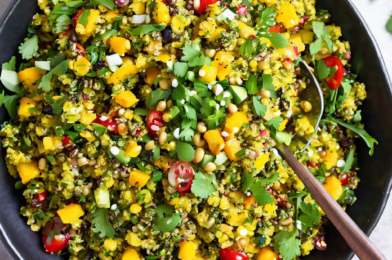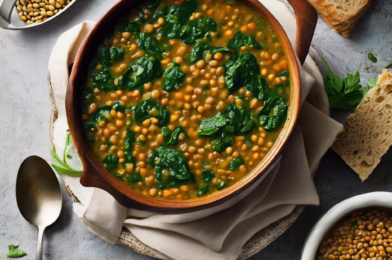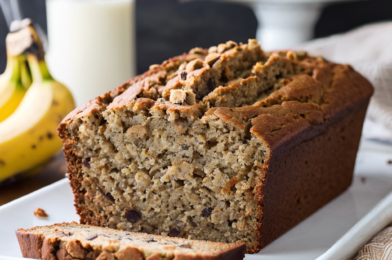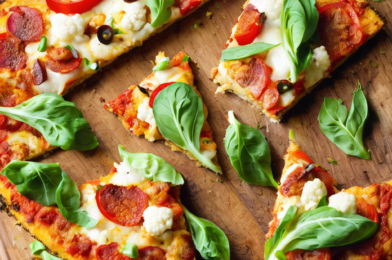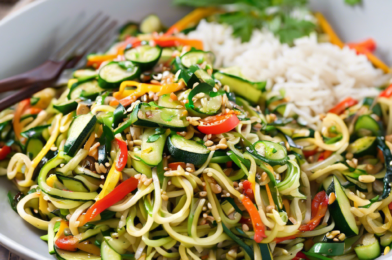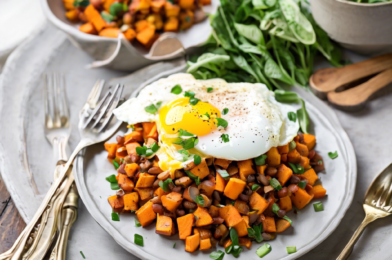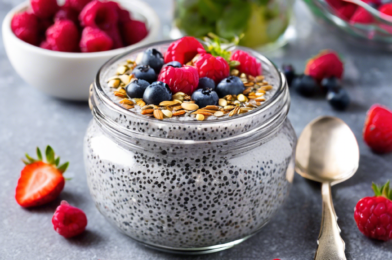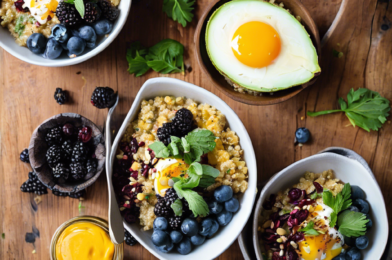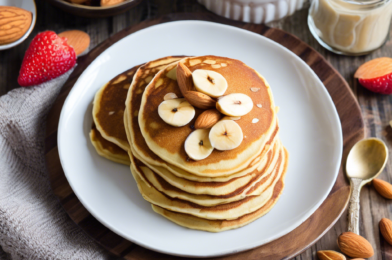“`html
This Turmeric Quinoa Salad quickly became a favorite in our household, and I can’t wait to share it with you. The vibrant colors and flavors make it a feast for the senses, and it’s packed with nutrients that leave you feeling satisfied and energized. My family loved it so much that we ended up making it twice in one week! The turmeric gives the quinoa a beautiful golden hue, and when paired with fresh vegetables and a tangy dressing, it’s truly a dish that delights both the eyes and the palate. If you’re looking for a healthy, delicious, and easy-to-make salad, this recipe is a must-try.
Ingredients
The success of this Turmeric Quinoa Salad lies in its fresh and wholesome ingredients. Here’s what you’ll need to gather before starting:
- 1 cup quinoa, rinsed
- 2 cups water
- 1 teaspoon ground turmeric
- 1/2 teaspoon sea salt
- 1 cup cherry tomatoes, halved
- 1 cucumber, diced
- 1 red bell pepper, diced
- 1/4 cup red onion, finely chopped
- 1/4 cup fresh parsley, chopped
- 1/4 cup fresh mint, chopped
- 1/4 cup lemon juice
- 2 tablespoons olive oil
- Salt and pepper to taste
Instructions
Creating this Turmeric Quinoa Salad is a straightforward process that even beginners can tackle with ease. Follow these steps to ensure your salad turns out perfectly every time:
- Start by cooking the quinoa. In a medium saucepan, combine the rinsed quinoa, water, turmeric, and sea salt. Bring to a boil over medium-high heat.
- Once boiling, reduce the heat to low, cover, and let it simmer for about 15 minutes, or until all the water is absorbed and the quinoa is fluffy.
- Remove from heat and let the quinoa cool to room temperature.
- In a large salad bowl, combine the cooked quinoa with cherry tomatoes, cucumber, red bell pepper, red onion, parsley, and mint.
- In a small bowl, whisk together the lemon juice, olive oil, salt, and pepper. Pour the dressing over the salad and toss gently to combine.
- Taste and adjust the seasoning as needed, then serve immediately or refrigerate for later.
Nutrition Facts
The Turmeric Quinoa Salad is not only delicious but also nutritious. Here’s a breakdown of the nutrition facts:
- Servings: 4
- Calories per serving: Approximately 220
Preparation Time
One of the best aspects of this recipe is how quickly it comes together. From start to finish, you can have this salad ready in under 30 minutes:
- Preparation time: 10 minutes
- Cooking time: 15 minutes
- Total time: 25 minutes
How to Serve
This salad is versatile and pairs well with a variety of dishes. Here are a few serving suggestions:
- As a main dish for a light lunch or dinner
- As a side dish with grilled chicken or fish
- In a wrap with hummus for a quick meal
- As a part of a buffet or potluck spread
- With a dollop of Greek yogurt on top for extra creaminess
Additional Tips
To make the most out of this recipe, consider the following tips:
- Rinse the quinoa: Rinsing removes the saponin coating, which can make quinoa taste bitter.
- Use fresh herbs: Fresh parsley and mint add a bright flavor that dried herbs can’t replicate.
- Customize the vegetables: Feel free to add or substitute your favorite veggies based on what’s in season.
- Make ahead: This salad can be prepared a day in advance, allowing the flavors to meld together.
- Store correctly: Keep leftovers in an airtight container in the fridge for up to three days.
FAQ Section
Here are some frequently asked questions about the Turmeric Quinoa Salad:
Q: Can I use a different grain instead of quinoa?
A: Yes, you can substitute quinoa with couscous or farro, but keep in mind that cooking times may vary.
Q: Is this salad gluten-free?
A: Yes, quinoa is naturally gluten-free, making this salad suitable for those with gluten sensitivities.
Q: Can I add protein to this salad?
A: Absolutely! Grilled chicken, chickpeas, or feta cheese are excellent additions for added protein.
Q: How can I make this salad spicier?
A: Add a pinch of red pepper flakes or diced jalapeño for some heat.
Q: What can I do if my salad is too dry?
A: Simply drizzle a bit more olive oil or lemon juice to bring back moisture and enhance the flavor.
“`
The above HTML content is formatted for easy integration into a WordPress post, offering an engaging and detailed presentation of the Turmeric Quinoa Salad recipe.
